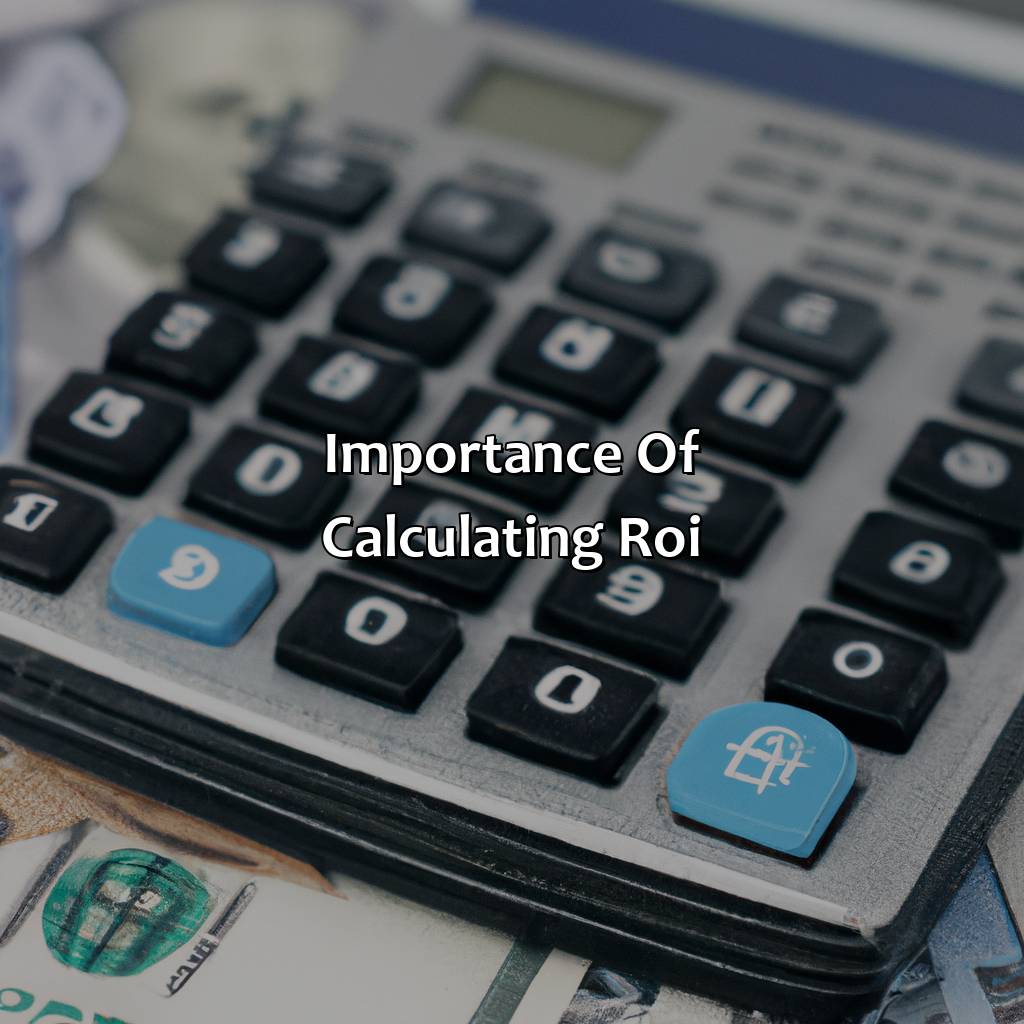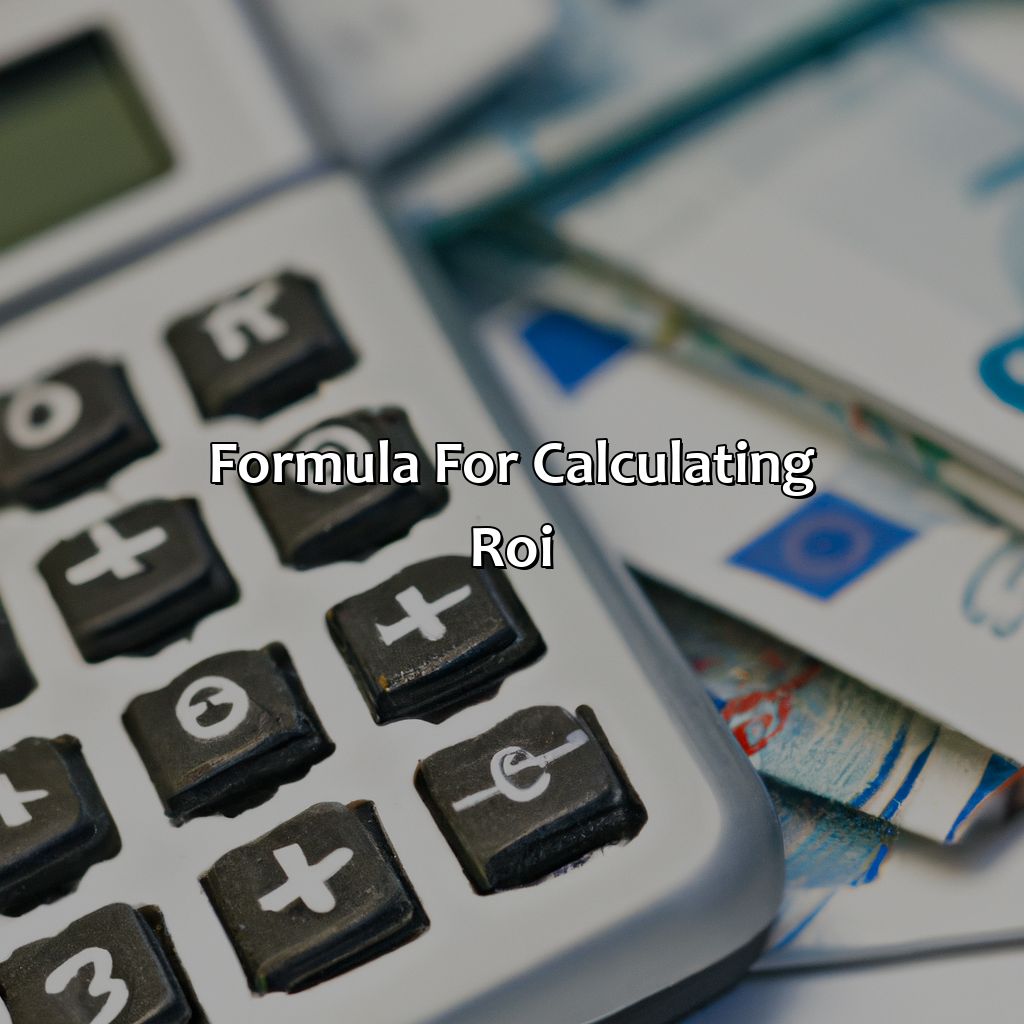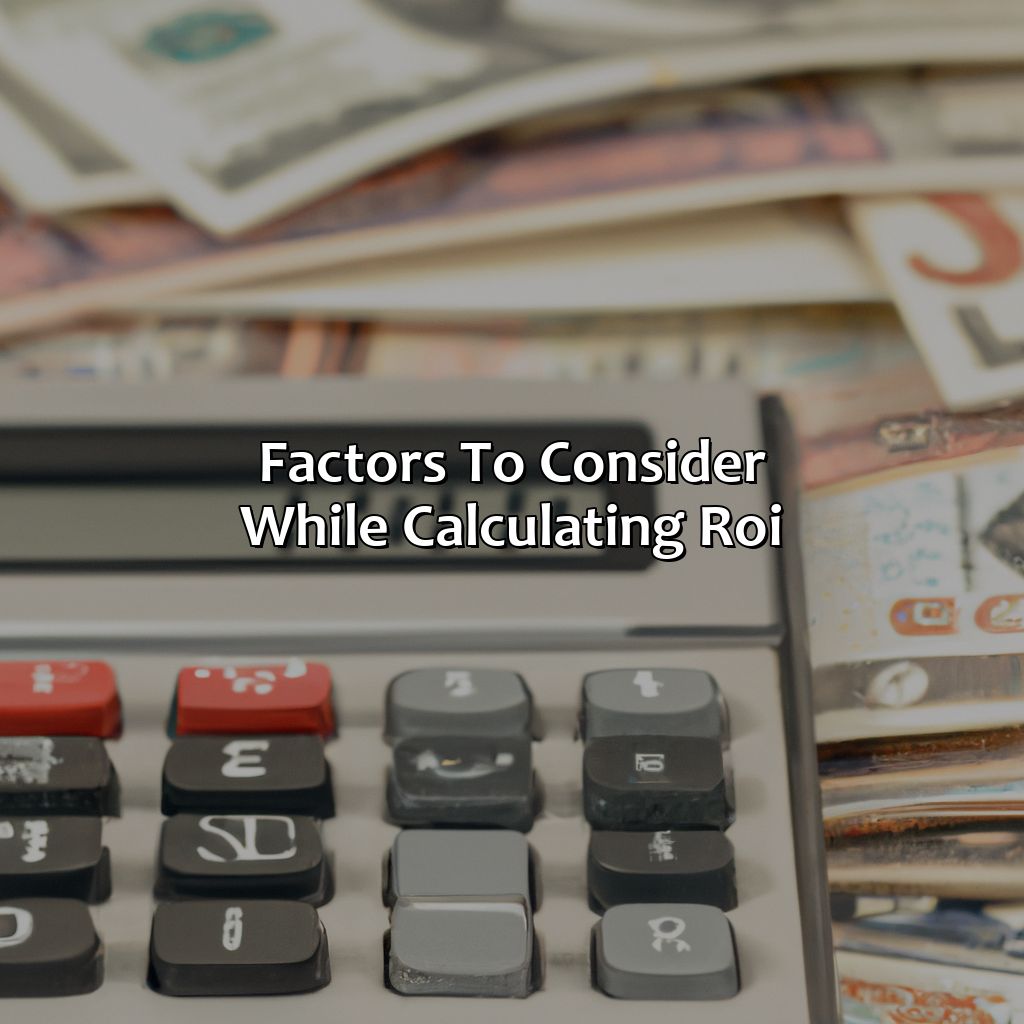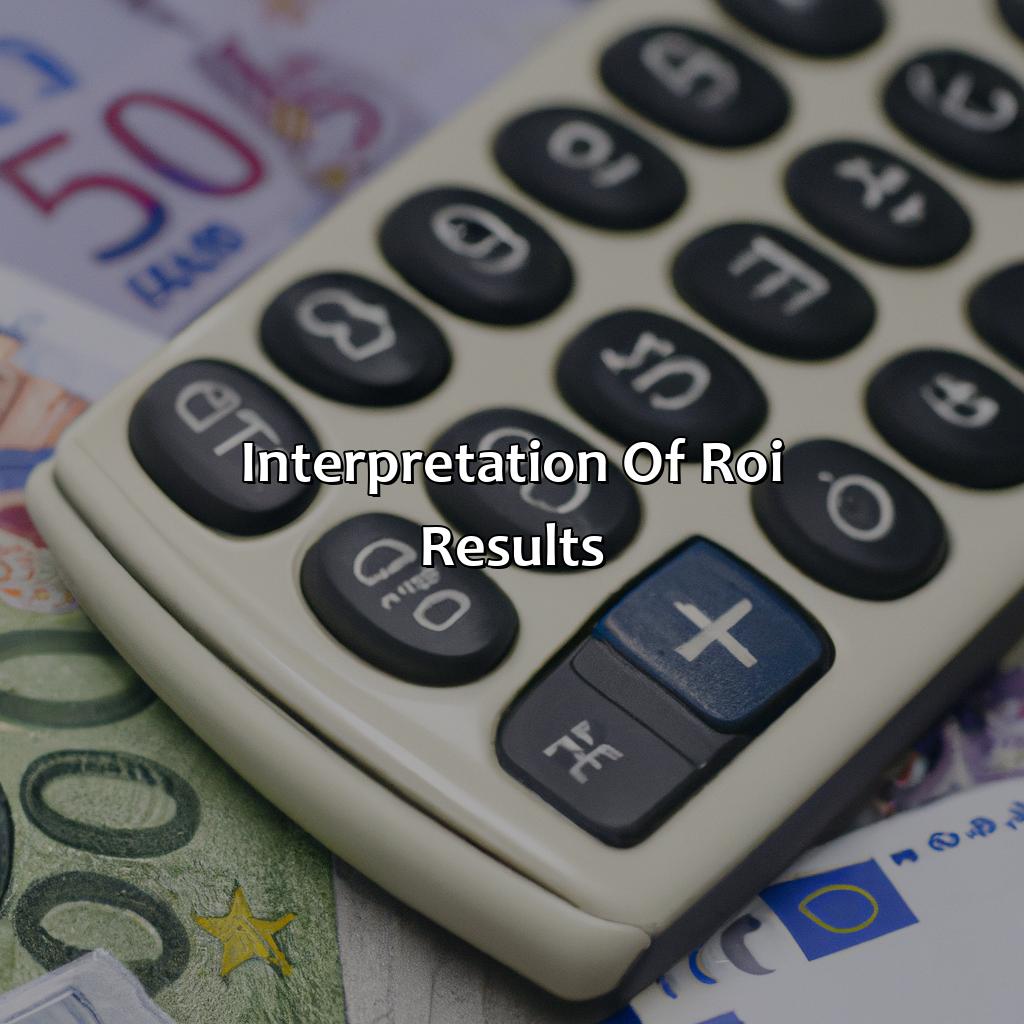How Do You Calculate The Return On Investment?
Key Takeaways:
- Return on Investment (ROI) is a financial metric used to evaluate the profitability of an investment. It measures the amount of return relative to the cost of the investment.
- Calculating ROI is important because it helps in making informed investment decisions and assessing the financial performance of the investment over time. It also enables investors to compare different investment opportunities and determine which one is most profitable.
- The formula for calculating ROI is: ROI = (Gain from Investment – Cost of Investment) / Cost of Investment. When calculating ROI for multiple investments, it is important to consider the timeframes, costs, and revenue generated from each investment to ensure accuracy.
Are you struggling to make sense of your financial investments? Calculating the return on investment (ROI) is an essential skill for any investor. You can use ROI to help you make better decisions and maximize profits! Learn how to calculate ROI in this article.
Definition of Return on Investment (ROI)
Return on Investment (ROI) is a financial performance measure that determines the return on an investment relative to the initial cost. ROI is derived by taking the profit or loss gained from an investment, dividing it by the initial cost of the investment, and then multiplying the result by 100. This provides an indication of the overall benefit or detrimental effect of the investment.
When considering investments, ROI is an important factor to consider, as it helps to measure financial gains or losses. To calculate ROI, it is important to consider the cash inflows and outflows of an investment. This can be done by reviewing financial statements, investment documents, and other relevant financial data. ROI can then be calculated by subtracting the total cost of the investment from the total profit, and dividing this result by the cost of the investment. The ROI calculation can be expressed either as a percentage or as a decimal.
It should be noted that ROI should not be the only factor used to evaluate investments. Other factors such as risk, liquidity, and market volatility should also be considered. However, ROI provides a valuable tool for investors to evaluate financial benefits or losses.
According to Investopedia, the average ROI for a S&P 500 stock is approximately 10%. This statistic highlights the importance of carefully evaluating investments, in order to ensure maximum financial gain.

Image credits: retiregenz.com by Adam Washington
Importance of calculating ROI
Calculating ROI is an essential aspect of analyzing the investment’s profitability. It helps in decision-making and determining the efficiency of investments. ROI is a measure of the gains or losses resulting from an investment, compared to its cost. Accurately calculating ROI helps in identifying the investments that bring high returns and reducing investment risks.
To calculate the ROI, the profit of the investment is divided by the investment’s cost and expressed as a percentage. Understanding how to analyze ROI enables businesses to make informed decisions about their investments. In simple terms, ROI indicates how much profit an investment generates for each dollar invested.
However, calculating ROI requires a thoughtful and accurate analysis of the investment’s costs and benefits. It is important to consider all potential costs, including indirect expenses and the opportunity cost of investing in alternative opportunities.
One organization invested $500,000 in a project that produced revenue of $750,000. After considering all the costs, including indirect expenses and opportunity costs, they found that the project’s ROI was 25%. The investment was profitable, and they could confidently invest in similar projects in the future.

Image credits: retiregenz.com by Joel Jones
Formula for calculating ROI
ROI Calculation: Understanding the Methodology
ROI calculation is a key financial metric that measures the profitability of an investment. It helps businesses to assess the efficacy of their investments and make informed business decisions. The formula for ROI is the ratio of net profit to the cost of investment, expressed as a percentage.
To calculate ROI, subtract the total investment cost from the net profit, and then divide the result by the total investment. The final figure can be multiplied by 100 to obtain the percentage value. Understanding the ROI calculation can be useful in determining the impact of different investment strategies and making informed business decisions.
It’s important to note that ROI can be influenced by various factors such as market volatility, inflation, and unexpected events. Therefore, a business must consider all relevant factors that could impact its investments and understand the implications before making any investment decisions.

Image credits: retiregenz.com by Adam Arnold
Factors to consider while calculating ROI
In calculating ROI, there are several essential factors to consider for optimal results. Firstly, the investment amount needs to be accurately calculated. Secondly, the cost of capital should be considered in determining the ROI. Lastly, the time frame for the investment should be analyzed to determine the ROI’s effectiveness.
- Accurate investment amount calculation
- Cost of capital consideration
- Time frame analysis for investment
To achieve the best results in calculating ROI, it is crucial to take note of any risks associated with the investment. These risks could include loss of capital, fluctuating markets, or any other economic or political factors that may impact the investment. An in-depth study of the risks can help to mitigate potential losses and increase ROI.
It is a fact that ROI is a critical aspect of any investment, and it is necessary to calculate it accurately to optimize returns. According to a report by Forbes, “Return on investment is a performance measure that evaluates the efficiency or profitability of an investment.”

Image credits: retiregenz.com by James Woodhock
Interpretation of ROI results
Business owners and investors need to interpret ROI data accurately to measure the profitability of their investments effectively. The ROI ratio is used to measure the relative value of the investment by comparing the return to the cost of the investment. It indicates the return on an investment, usually expressed as a percentage. This ratio allows investors to make informed investment decisions.
ROI results can give investors and business owners an overall view of the profitability of an investment. It can also help them to rank different projects and make better budgeting and investment choices. Instead of the “Interpretation of ROI results” heading, we can describe this process as “Evaluating the relative investment value using ROI.”
One important consideration when interpreting ROI results is to understand the elements that make up the calculation. These elements include the cost of the investment, the gain from the investment, and the time-frame of the investment. Another factor is the opportunity cost of choosing one investment option over another.
To improve ROI, investors can implement different strategies, such as reducing costs, increasing revenues, or improving efficiency. To maximize ROI, investors must continually monitor their investments’ profitability and regularly adjust their strategy for optimal results.

Image credits: retiregenz.com by Harry Duncun
Five Facts About How To Calculate Return On Investment:
- ✅ The return on investment formula is ((Current Value of Investment – Cost of Investment) / Cost of Investment) x 100. (Source: The Balance)
- ✅ ROI can be calculated for any investment, including stocks, real estate, and businesses. (Source: Investopedia)
- ✅ ROI helps investors determine the profitability of an investment and compare different investment options. (Source: Forbes)
- ✅ ROI can be used to measure short-term and long-term returns on investments. (Source: Cleverism)
- ✅ ROI can be influenced by a variety of factors, including market conditions, inflation, and taxes. (Source: The Motley Fool)
FAQs about How Do You Calculate The Return On Investment?
How do you calculate the return on investment?
Return on investment (ROI) is a measure of how much profit or return is generated from an investment compared to the cost of the investment. To calculate ROI, use the following formula:
ROI = (Net Profit / Cost of Investment) x 100
Net profit is calculated by subtracting the cost of the investment from the total revenue received as a result of the investment.
What is a good ROI?
A good ROI varies depending on the industry and the type of investment. Generally, an ROI greater than 10% is considered to be a good return on an investment. However, the benchmark for a good ROI varies depending on individual circumstances and investment goals.
What are the limitations of using ROI to evaluate investments?
ROI is not always the best method of evaluating investments because it does not take into account the time it takes to earn the return, the risks associated with the investment, and the opportunity cost of investing in other opportunities. Additionally, ROI can be easily manipulated and can be an unreliable measure of an investment’s success.
What factors should be considered when calculating ROI?
When calculating ROI, it’s important to take into account all costs associated with the investment, including transaction fees, marketing costs, and labor costs. Furthermore, it’s important to consider the potential risks associated with the investment, such as changes in market conditions or competition.
Is ROI the only factor to consider when making investment decisions?
ROI is an important consideration when making investment decisions, but it should not be the only factor considered. Other factors to take into account include the level of risk associated with the investment, the investor’s liquidity needs, and the investor’s overall investment goals and objectives.
Can ROI be negative?
Yes, ROI can be negative if the cost of the investment exceeds the net profit generated by the investment. In this case, the investment has resulted in a loss rather than a gain, and the ROI will be negative.
